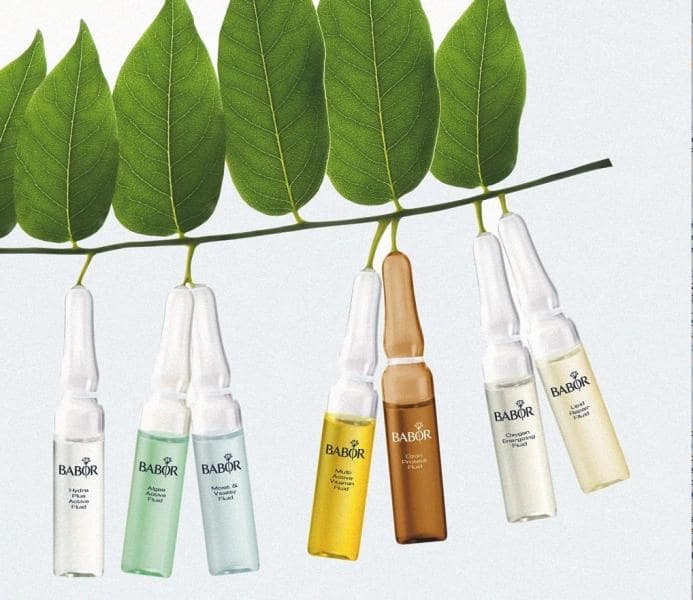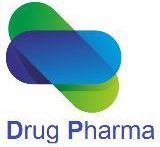
Anita Murray
If overhauling your entire skin-care routine after summer is not an option then fear not we have got you covered. Let’s talk ampoules, supercharged serums, high potency actives, and peels!
Ampoules and Concentrates
The big trend this year is ampoules. If you are not already using them – you are missing a trick! Most of us are already using serums in our routine or a great moisturizer with a hit of skin-loving active ingredients. So, why complicate things by adding another mini serum to our beauty arsenal? Well, these targeted cutting-edge elixirs are not just delivering a top-up of rejuvenation or hydration that your skin needs. When compared to serum, an ampoule is an intensively-high concentration of active ingredients, focused on a specific skin concern over a week to 28 days-use. Ampoules pack a punch in helping the skin truly transform.

Typically, each ampoule is sealed in a tiny, airtight, single-use capsule and focused on the specific skin concerns. Here is a general breakdown:
Boosters:
A skin booster is designed to enhance the absorption of the next step in your skincare routine, which could be a serum or moisturizer while balancing PH levels and hydrating skin with its lightweight formula.
Serum:
The best way to think of a serum is that it’s a lightweight, fast-absorbing moisturizer, designed to deliver active ingredients into the deeper layers of the skin. Just remember to use this one before your moisturizer but after your booster.
Face Oil:
Can be used in a number of ways. I usually make this the last step in a night-time routine and apply it after moisturizer.
Ampoules win the day for me. The single-use, air-tight packaging tends to contain fewer chemicals and preservatives, maintaining the strength and potency of active ingredients such as Vitamin C and Hydroxy Acids, as well as being fabulously portable to pop in your handbag or suitcase for an on-the-go glow. Take a moment to assess your skin condition and decide on what you want to achieve for your skin. Then select your lab fresh ampoule based on that skin goal. I love the selection of ampoules from Skeyndor and Babor. Every skin is different and has specific needs, so Skeyndor gives a simple cure called Uniqcure. Choose from more than 35 clinically-proven active ingredients: from healing, hydrating, and brightening to lifting, filling, and densifying. Good cell renewal, an optimum skin barrier, the right level of hydration and luminosity are all essential to achieve a healthy and radiant glow.
Exfoliating
Choose your peel wisely! What can you do to externally repair and hydrate your skin? The first step is always to exfoliate the top layers of dead skin blocking hydration from penetrating deeper into the surface layers of healthy skin cells.
After the long-awaited ban on microbeads, acids have become the most popular exfoliator for smooth skin and a healthy glow! AHAs and BHAs came out in the early ‘90s and are still going strong in 2019. There is a reason they have been used in products for 30 years. Next to using SPF, a well-formulated AHA or BHA based treatment is actually critical to maintaining a healthy, hydrated, more even-toned complexion.
Acids
A is for AHAs – Alpha hydroxy acids. These work on the surface, gently dissolving the bonds between dead skin cells so that they can be easily removed. They are water soluble and they do not penetrate very deep. The most common AHA is glycolic acid. This is great for all skin types and very good for mature skin, diminishing fine lines and brown spots. Others include lactic acid, citric acid, and mandelic acid.
- AHAs are naturally – occurring substances found in various fruits, sugar cane, and sour milk!
- B is for BHA – Beta hydroxy acids. The most common BHA is salicylic acid. It’s oil soluble so it can penetrate deeper to clean out excess sebum, pores, and excess oil. To summarise this one – if you have blemish-prone skin and you are not using BHA, it’s a good time to start.
- P is for PHA – Polyhydroxic acids. It is unlikely you have heard of these guys, but they are basically cousins of AHAs but with larger molecules. These are better for super sensitive skin, as larger molecules mean lower penetration and you are therefore less likely to see any side effects. The most common PHAs are Gluconolactone and Lactocionic acids. PHAs also fight Glycation – A process that takes place when digested sugar permanently attaches to the collagen in your skin and create weaknesses leading to premature aging.
A common misconception is that something acidic is going to peel your skin but this is not always the case. In general, acids exfoliate the skin, dissolving dead skin cells and increasing skin cell turnover when used in small doses. They can give you brighter, smoother skin with little or no downtime.
Now that we have covered the science, here are some of the best acid-based products to get you started. Don’t forget the golden rule – Always use an SPF, year-round, when you are using acids on your skin. You must also crucially remember that your skin may look slightly worse before you will notice an improvement.
Remember to always consult with your doctor or therapist if you are pregnant or breastfeeding. Salicylic acid, for example, is not recommended during pregnancy. It is in all kinds of exfoliating products these days, so it can be a tricky one to sidestep when you are pregnant. I recommend seeking out some of the purer products. Lactic and mandelic acids are considered safe in low concentrations and are good options for someone who still wants some sloughing action. Personally, I opted for manual exfoliation during pregnancy, I used a washcloth to manually slough off dead skin. Muslin cloths are particularly brilliant for this purpose. After applying my facial cleanser, I used the Image Ormedic cleanser, dampening the muslin and removing the cleanser.
The key here is to keep it simple but don’t abandon your skincare regimen, as a mom to two small children, I get it! To take care of our children to the best of our ability starts with taking care of ourselves first, the last thing you want to worry about is your skin so maintain a healthy skincare regimen or you will spend more time and money correcting the problem rather than preventing it.
